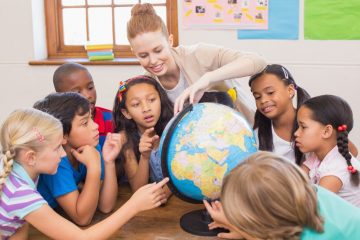
Recently, The New York Times published an article about how schools can connect the things they teach young people with actual issues of importance in the real world. Starting last year, The New York Times conducts their annual “December Challenge.” It challenges students to think of creative ways they can link what they learn in school to global events. Out of the 2,000 students who took on the challenge, 53 suggested new, creative, and insightful ways to link their school curriculums to the world.
Though some of these connections might seem obvious, what The New York Times describes as a “delightful” sight was seeing these students “thinking in action.” Throughout the challenge many of them described aha moments when they realised something they had done in school was an allusion to things that would help them understand the bigger picture in the world.
After I read the article, it led me to ask the question about whether or not what I am learning in school has helped me realize things in the real world. The most obvious class that came to mind was
I started to think about whether or not I make connections to the real world in any of my other classes. As a busy senior I realize that a lot of the details are a little blurry since freshmen year, but most recently I began to look at how being in the IB Diploma has helped me make these connections. The classes that I take which make the most connections are Biology, Chemistry, Psychology, and Language & Literature.
Though there are definitely connections to be made through all classes, out of these classes I can see direct connections being made the most in Psychology and Language & Literature. In Psychology, I am able to directly connect and study human behavior and mental disorders. A lot of the content that we go over actually helps enhance my understanding of things that happen to me in real life. Especially in our HL optional unit, Human Relationships, and the study of the digital world. As a student who takes this class, I can see direct correlations being made to my personal life with the content we are learning. Mr. Owen often asks our class if any of us have experienced or gone through a similar situation than that of what we are learning. Perhaps because Psychology is literally the study of human behavior, we can see how what we’re learning can to a certain extent be a general portrayal of our own behavior. Common topics we cover can almost directly apply to most students in our school is relationships, the development of technology on learning, and how international communities can have an influence on our culture.
In Language & Literature, we make direct connections by analyzing media publications and literary texts. Within media publications, we have looked at how stereotypes, gender roles, and language use is used and portrayed in music videos, news reports, and articles. Thesis statements consist of themes. Themes are the big picture that the author is communicating to the reader through a series of events, the personality of characters, and the environment the story sets place in.
One of the winning essays of The New York Times competition that was my personal favourite was one written by Jeffery Liao, a student from New Jersey. His essay was on the connections between “The Grapes of Wrath,” a novel by John Steinbeck and “The Impossible Choice My Father Had to Make,” an op-ed article by Reyna Grande on the immigration restrictions imposed by Donald Trump on the Mexican border. Liao’s essay analysed the ideas between a realistic novel he had read in school to real world news happening in the U.S.
Schools all over the world try to connect their curriculum to real world situations. This is beneficiary to students as we can directly take the knowledge we learn in school and use it to keep ourselves updated.
For more information please visit The New York Times.